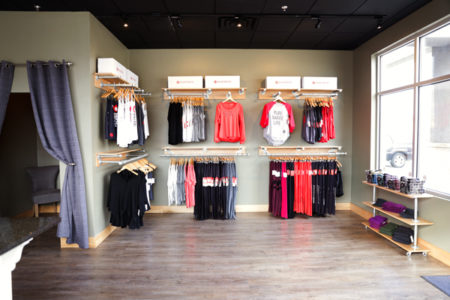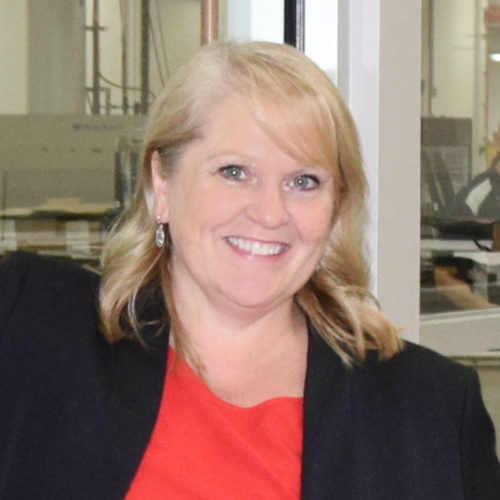Sometimes he’s a leader; other times, more of a supporter. As often as he can, Jared Wilson, director of design and construction for Pure Barre, makes himself available as a reference and guide. No matter which aspect of his job he embraces at any particular time, Wilson is helping franchisees of all kinds turn their fitness business visions into reality.
“It’s providing a vehicle for franchisees to enter into business with differing skill sets,” Wilson says. “Maybe it’s a fitness enthusiast, or maybe it’s a Manhattan lawyer who’s burnt out and just wants to own their own business. I end up working alongside all these passionate entrepreneurs, helping them ultimately open their own business successfully.”
Currently billed as “the largest, most established barre franchise in North America,” Pure Barre was founded in 2001 and enjoyed modest success until it was franchised in 2009. Since then, the company and its ballet barre-based form of fitness have grown at such a rate that the company now counts more than 420 studios in 43 states, as well as three Canadian locations. It’s noteworthy enough to secure Pure Barre a spot on FranchiseRankings.com’s list of “Top 25 Fitness Franchises” in 2016.

Wilson, whose previous experience includes management work with the East Coast commercial real estate developer EDENS, joined Pure Barre in 2012 at its Spartanburg, South Carolina, headquarters. By early 2013, the company’s three-person development team grew to eight (led by Wilson, Martha Albergotti, and Mike Kormelink), implementing organizational structures and studio opening timelines. Working regularly with four different regional architects—though Wilson says franchisees may suggest one themselves—the team now oversees the development of roughly 1,600 square feet of space at each location.
“You already have standards in place to make sure we can fit the optimal number of clients in there,” says Wilson, who indicates that as many as 40 or 50 people might occupy the studio during class transition times. “We try to be as flexible as we can so we can take advantage of being in the location we want. We don’t want to rule out a location that happens to be an octagon-shaped space . . . we’ll find a way to make it work.”
Each new location of Pure Barre comes to be with the assistance of three relatively small teams that meet on a weekly basis throughout the process to “track the NSO (new store opening) pipeline,” Wilson says, and to ensure that the team support of the franchisee in question stays well-coordinated. The franchisees themselves, who benefit greatly from working with a support staff capable of aggregating the lessons learned at other locations, also have access to an online portal to walk them through the opening process.
“We don’t want them to just download a bunch of information they never look at,” Wilson says. “We don’t print out a three-inch binder on how to open a Pure Barre. . . . It would probably find its way to the corner, collecting dust.”
Something important the franchisees do learn along the way is flexibility in design. Although the studio space itself is uniform at all locations, variables exist elsewhere.
“Ideas have to be sent to me for approval, but they allow for a lot of variety,” Wilson says, listing reception-area light fixtures, region-appropriate artwork, and vanity boutique bathroom décor among the choice details available. “We also have preapproved finishes for flooring in the reception area. Whether it’s stained concrete or porcelain top-floor, we try to give [franchisees] ways to personalize while keeping it within a measurable standard.
“I enjoy the fact that Pure Barre is not an out-of-the-box kit. People can put their little touches on it, which helps them create that ultimate experience for clients and a connection to the community.”
Space Breakdown
Each Pure Barre location typically includes:
• A 400-square-foot reception area/boutique in the front
• A “client area” for attendees to prepare for their barre class
• An 800–1,000-square-foot workout room featuring mirrors on two walls, a ballet barre on all four walls, and padding underfoot (Wilson notes the only equipment clients need to bring for a Pure Barre class is a pair of “sticky socks” sold in the store’s boutique)
• A back area, the size and purpose of which vary depending on the facility

Supporting the Franchise
With 80–90 new locations opening in a given year, Pure Barre depends on the three small teams within the company’s organizational structure to keep things running on time and on budget from coast to coast:
Franchise development: Consists of the head of franchise development, two franchise recruiters/sales, and two franchise consultants
Real estate: Consists of a director and a GIS/demographics analyst
Design and construction: “The goal is to set franchisees up to operate successfully for the life of the location, delivering the best on-brand experience to our ultimate customer, the client,” Wilson says


